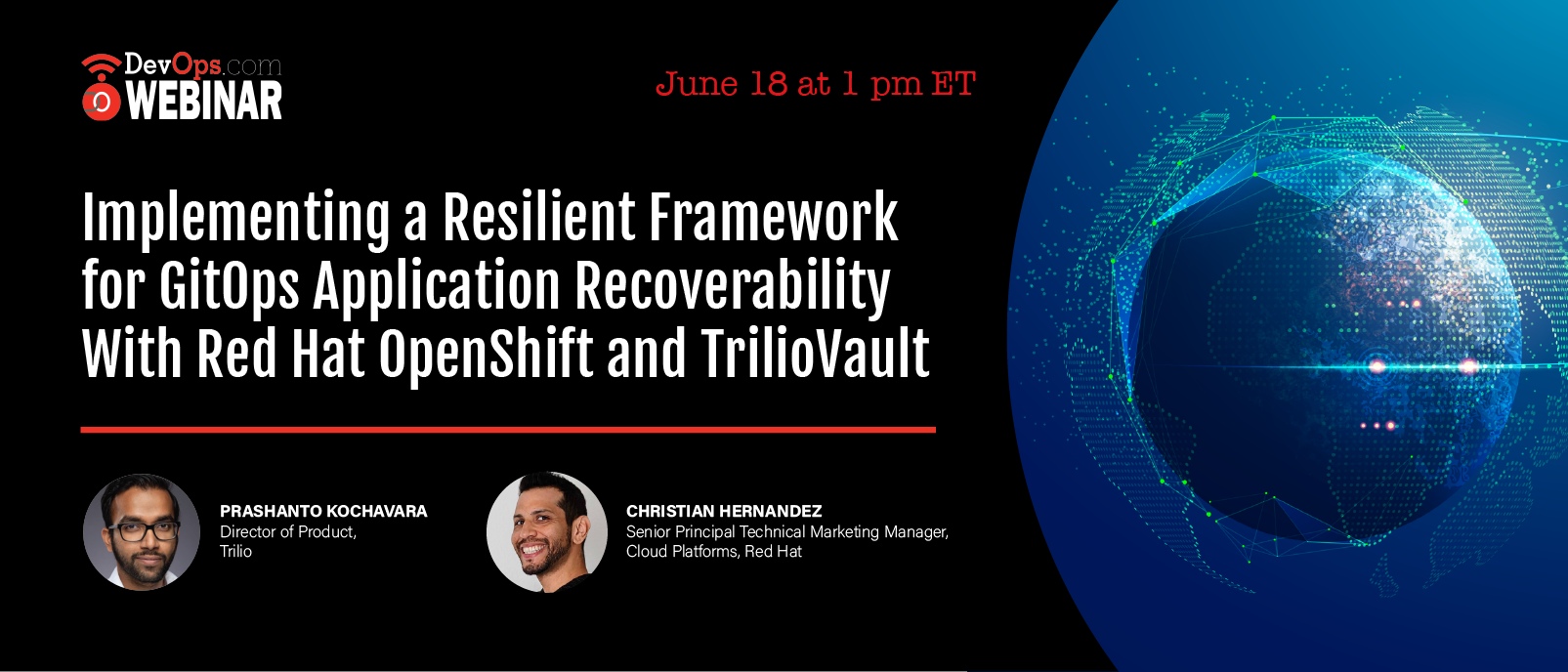Implementing a Resilient Framework for GitOps Application Recoverability With Red Hat OpenShift and TrilioVault
Webinar
Think About Your Audience Before Choosing a Webinar Title

Sponsored by TRILIO
Friday, June 18, 2021
1 p.m. ET
What You’ll Learn in This Webinar
GitOps expands the use of DevOps best practices across the entire application lifecycle, including:
- development/testing
- deployment
- lifecycle management
- infrastructure configuration
To enable this, administrators can configure and manage Red Hat OpenShift and cloud-native applications using GitOps principles. But, no matter whether your OpenShift cluster(s) are hosted on-premise or in the cloud, downtime happens. For enterprises finding the root cause and recovering from downtime quickly is paramount.
In this webinar, we’ll explain how TrilioVault can be used in conjunction with GitOps to provide:
- Protection and Recovery for your GitOps tools
- Help with compliance and troubleshooting exercises by leveraging the running state of an application
- Recovering from disasters easily and quickly Join this webinar to learn how to ensure application recoverability across Red Hat OpenShift clusters for any private, public or multi-cloud services.
Prashanto Kochavara
Director of Product - Trilio
Prashanto Kochavara is Director of Product at Trilio, a leader in cloud-native data protection. Kochavara is responsible for the product strategy, roadmap and execution of the company's backup and recovery platform for Kubernetes.
Christian Hernandez, RHCA
Senior Principal Technical Marketing Manager, Cloud Platforms - Red Hat
Senior Principal Technical Marketing Manager - Cloud Platforms







